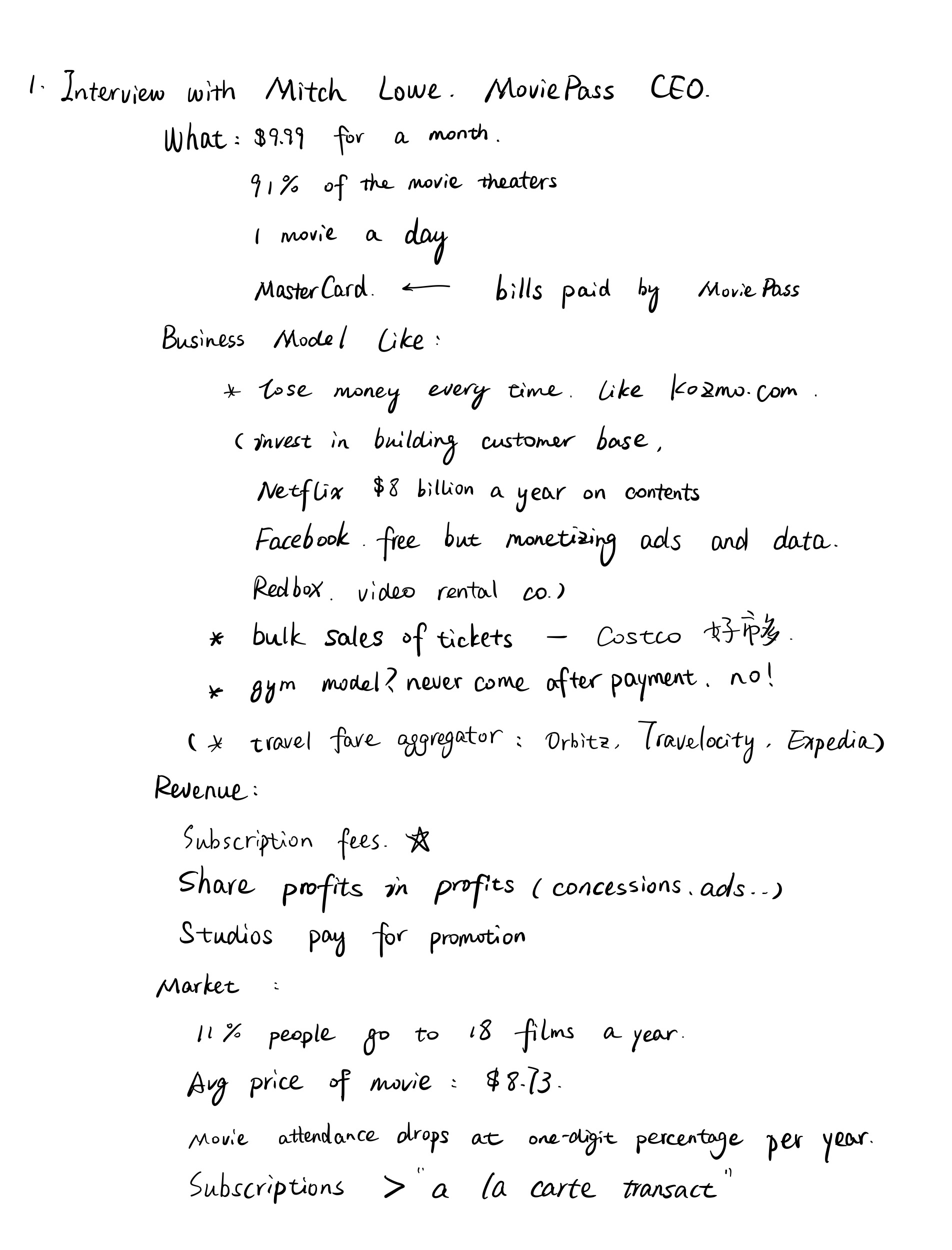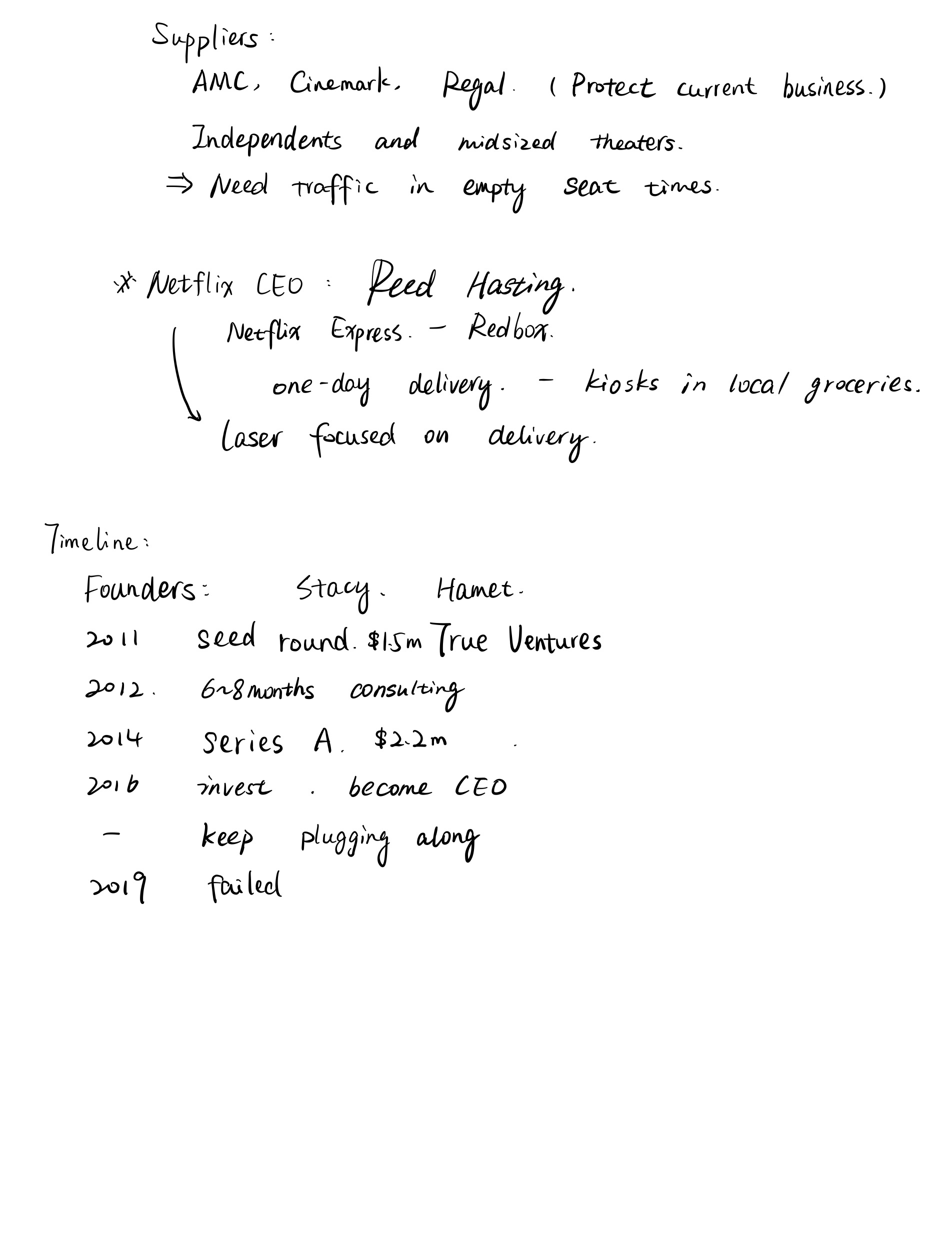Notes for Marketing
Publish date: Oct 3, 2021Session 1 Marketing
Understand (Needs & wants of) customers and create value -> Growth.
1. Structure
Market Analysis: Content, Company, Customers, Competitors, Collaborators
Strategy: Segmentation, Targeting, Positioning
Mix: Product (create value), Promotion (communicate value), Place (deliver value), Price (capture value)
2. Value
Value = Perceived Benefits - Perceived Costs
- Perceived Benefits: Rational(economic), Functional, Psychological(emotional, social)
To influence experience:
- Bottom-up processes: can be sensed
- Top-down processes: Expectations, desires, beliefs
3. Best buy case
Customer Decision Process:
- Need Recognition
- Evaluation -> Best Buy (provides value to brands) / Circuit City
- Choice -> Best Buy
- Purchase ->
Best Buyreplaced by Amazon
Value is created along the process.
Customers can be anyone who gets value from you.
Response to Covid-19:
- curbside pick up
- by-appointment shopping
- stores as fulfillment center
- partner with Shipt, quicker delivery
*Case mentioned
Sell milkshakes - customer insight, motivations
Toyota Prius vs Porsche 911 Carrera
Tinder: what value to customers?
Coke Cola: emotional connection
SoBe Adrenaline Rush: How to increase mental acuity
Session 2 Understand the Market
1. Causation
Online Advertisement
Q: eBay Keyword ads(SEM, Search Engine Marketing) -> sales?
Fact: Customers who saw the ads are supposed to have higher sales
Confounding variable: Familiarity with eBay
Conclusion: Natural search results is almost perfect substitute results: 99.5% from paid -> natural.
Blake, T., Nosko, C., & Tadelis, S. (2015). Consumer heterogeneity and paid search effectiveness: A large‐scale field experiment. Econometrica, 83(1), 155-174.
Be aware of random correlations.
2. Experiments
1) Components
- Test question
- Independent Variable
- Randomization - Selection bias: not equal likelihood of being in each group
- Dependent Variable
2) Goals
Internal Validity
- Confounds
External Validity
- Sample -> population (generalization)
- Context
3) Advanced Designs and Analysis
Full factorial design
- change two independent variables
A/B Test
- webpage design: media * buttons = combinations cells
4) Intent to treat vs Treatment on treated
Effect of program? Effect of treatment?
- Email openers may be bigger spenders.
Promotion(ITT), claimer/redeemer(TOT)
3. Sampling
1) Random
2) Matched samples: more efficient
3) Sample size?
Statistical power
- in R:
power.t.test(n=NULL,delta=7,sd=15,power=0.90,sig.level=0.01)givesn=138.3163
dependes on:
- delta (effect size/difference): What’s the smallest you would care about?
- Sample size: What’s the largest sample you could get?
4. Quanlitative Methods (for less well-defined questions)
1) Focus Groups & Interviews
2) Observation (do not intercept)
5. Surveys
error:
- Sampling error (too few samples, not representative)
- non-sampling error
- Non response error (selective non response, e.g. Hotel satisfaction,AT&T bills)
- Measurement error
- Question ambiguity
- Order effects
- Question fails to capture construct
- Social desirability
Coping with non-random samples
- Validate large(cheap) non-random by comparing with samll(expensive) more random
- weights/quotas: make sample size $\times$ weight equal for all groups. (weight = Target(customer base) proportion / Survey propotion)
More about Weighting:
*Case mentioned
Hormone replacement therapy: Women with higher socioeconomic status got the new therapy in study
Ice-cream sold vs Murder rate
Divorce rate in Maine vs Per capita consumption of margarine
people drown in pool vs films Nicolas Cage appeared in
Gym attendance experiment
Random digit dialing - Survey
Session 3 Customer Lifetime Value
1. Interview with Mitch Lowe, CEO of MoviePass
MoviePass:

Is is profitable?

But customers may unsubscribe (Churn), casual moviegoers will cancel at a greater rate.
2. Customer Lifetime Value
Given margin earned at the end the period 1,
$$ CLV = m(\frac{r}{1+i-r})-AC $$
where m is margin per period, i is discount rate, r is retention rate = 1-churn rate, AC is acquisition rate.
3. Increasing CLV
increase r
decrease AC
- Value of customers differ across channels. Identify high value customers
increase margin
- up-selling, cross-selling
*Case mentioned
Hubspot
BlueApron
Groupon
Session 4 Harvest value: Pricing
1. Pricing methods
1) Cost-driven
2) Competition-driven
3) Value to Customer
Value to Customer = Reference Value + Differentiation Value
- Reference Value: Price of Closest Competitive offering (CCO) / best substitute
- Differentiation Value
Economic Value to the customer (EVC) is the maximum amount a customer should be willing to pay assuming fully informed about benefits
Perceived value (WTP) is lower? Increase the expectation
Differentiation value can be negative. e.g. RYANAIR Airlines
2. What values?
Conjoint: Valuing individual attributes
Learn more from Sawtooth Software
Ask for relative comparisons of different products with price as an attribute.
Run regression and the coefficients are utilities, or “part worths”
Usage of conjoint analysis:
- Segmentation
- Product development
- Predict choice
- Pricing
- Brand equity
3. Discrimination
Identify differences in WTP based on
- Occasion
- for wedding, etc
- Timing
- during peak times
- Quatity (multi-part tariff)
- Customers can become more price sensitive with higher quantities purchased
- Customer characteristics
- Early adopters have higher WTP
4. Consumer Psychology
Prospect Theory: pain from loss is more
- discount is gain
5. Calyx Flowers Case
Both are upscale professional women
| Customer type | Current | New |
|---|---|---|
| Catalog Conversion | ~5% | 1% |
| Online Conversion Rate | 1% | .33% |
Cost per catalog: ~$0.75
Average margin: ~$40
| Customer type | Current | New |
|---|---|---|
| Yield per catalog | ~5% | 1% |
| Num catalogs per order | 20 | 100 |
| Spend on catalogs per order | ~$15 | ~$75 |
| Profit | $25 | -$35 |
Business Model:
- Calyx:
Competitive Analysis:
| Benefits | Calyx | Grocer | Florist/FTD/1-800 |
|---|---|---|---|
| Presentation | L | M | H |
| Longevity | H | L | M/L |
| Variety | H | L | M |
| Speed | L | H | H |
| Price | M | H | M |
Segmentation:
- Demographics
- Original: Age 30-65, income > 100k, female
- Possible: Age 30-65, income > 100k, male; Age 30-65, income 50k-100k, female
- Needs/Occasions:
- Gifts
- Events
- Business/decoration
- Home decoration/Hobby
| Benefits | Calyx | Grocer | Florist/FTD/1-800 | Gifts | Events | B2B | Home Decor |
|---|---|---|---|---|---|---|---|
| Presentation | L | M | H | H | H | H | L |
| Longevity | H | L | M/L | L | L | H | H |
| Variety | H | L | M | H | H | M | H |
| Speed | L | H | H | H | L | L | L |
| Price | M | H | M | H/M | H/M | L | H/M |
Needs-based segmentation - More efficient targeting
*Case mentioned
Atlantic Computers
Steves Jobs Offers Rare Apology, Credit for iPhone
Economist Subscription Pricing
Session 5: STP
1. Segmentation
Never try to please everybody
Base of Segmentation
| Who? | Where? | What? | Why? |
|---|---|---|---|
| Descriptors | Decision Process | Behaviors | Motivations |
| age | Level of Awareness | Usage | Values/Needs |
| gender | Level of Knowledge | Products | Goals |
| income | Previous Experience | Channels | Desired Benefits |
| geography | Preferences |
Cluster Analysis - How many clusters?
Statistical:
- Elbow Method
- Silhouette Method
Managerial:
- Capability of company
- Sufficient size of cluster
- Sufficient, identifiable differentiation
2. Targeting
Customer (Opportunity for Profit)
- Segment Size
- Growth Rate
- Reach ability & ability to fulfill needs
Company (Fit)
- With Objectives
- With Competencies
- With Resources
Competitive (Intensity)
- Underserved needs
- Competitors’ strengths
3. Positioning (in the minds of consumers!)
- Target Market
- Key differentiator
- Competitive set
- Evidence you claim
Perceptual Maps
- Factor analysis
Positioning • What brands are we seen as similar to? • What associations to customers have with our brand (and our competitors’ brands)? Competitive landscape • Who are our closest competitors • Which customers are we competing for Market Opportunity • Are there any unmet needs in the market?
4. Mini case
Background: Leader in the B2B market for pregnancy test
Objective: Wants to gain share in the B2C market
STP + 4Ps
*Case mentioned
Hillrom
Planet Fitness
Best buy: firing customers
LinkedIn vs other social media
VOLVO: Safe
Vij’s restaurant
Cadillac: from a “classic American” image to “young luxury” image